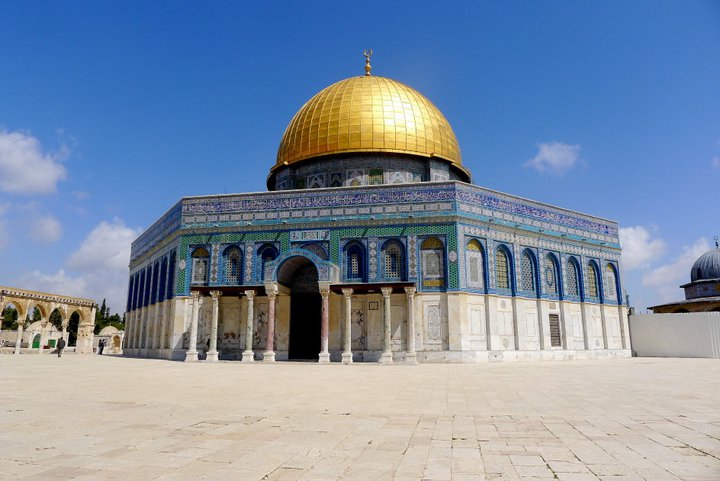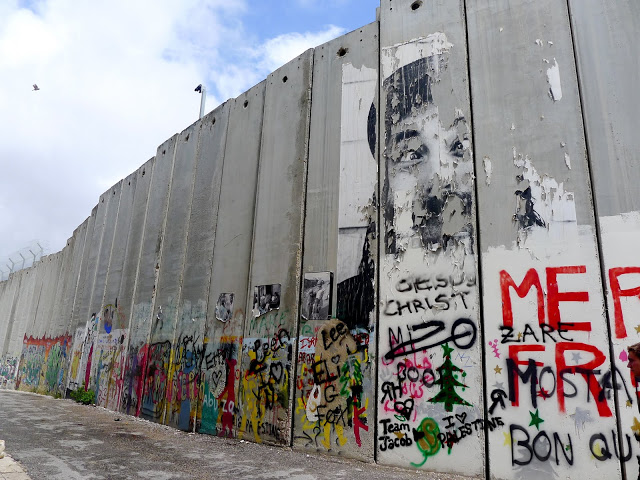
Thoughts on Palestine
While Jerusalem was awe-inspiring and beautiful, Palestine hit me like a slap in the face.
I had originally hoped to visit the West Bank in order to become exposed to the two faces of Israel and gain a deeper understanding of the conflict that has torn apart the Middle East. Yet, I came back from my day trip with more unanswered questions than before and a nauseating sense of responsibility for the one-sided policies of the American government.
We began our journey in Bethlehem by driving along the wall that separates Israel from Palestine. The wall is an eight-meter high concrete barrier that has been under construction for about a decade. It primarily runs along the “Green Line,” which divided the two territories in the 1949 Armistice Agreement.
Yet, at times, the wall strays from the line and encroaches deep into Palestinian territory. It encompasses Israeli settlements in the West Bank and completely encircles some Palestinian towns. The wall severely restricts Palestinians who live nearby, particularly in their ability to travel freely within the West Bank and to access work in Israel.
I felt as though seeing the Palestinian experience gave me a better understanding of what South African Apartheid must have been like. In fact, while Israelis justify it as a “Security Wall” or “Anti-Terrorist Fence,” ordinary Palestinian citizens have deemed it the “Apartheid Wall.”

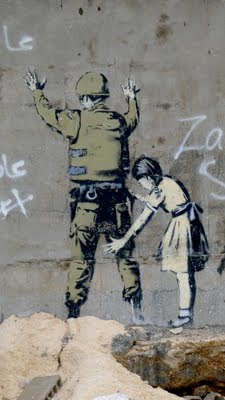
After a somber time interpreting the various pictorial symbols along the separation barrier, we visited the church at the Field of Shepherds—the site at which angels allegedly appeared–before continuing farther into the Palestinian territories.
Taking our driver’s advise, we chose to save the Church of the Nativity for the end of the day in order to avoid long tourist lines.
From Bethlehem, we decided to visit Hebron, because our driver said it would be the best place to get a feel for contemporary Palestinian life.
On the way, we stopped at the Herodium–a manmade volcano built by King Herod between 24 and 15 BC. On top of the volcano is a ruined palace with an underground network of tunnels that run through the interior of the mountain. The site is incredible, but perhaps more striking than the site itself is the view from the top. We could see the beautiful valley and rolling hills that extend for miles. Dotting these rolling hills are white and red cookie cutter Israeli settlements.
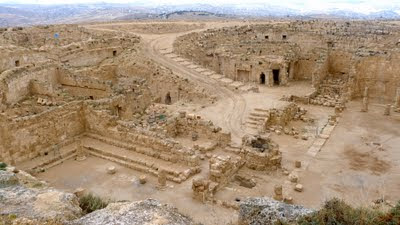
The settlements were nothing compared to what we would see in Hebron, however.
Hebron has historically been an important pilgrimage site for people of many faiths, as it houses the tombs of Isaac, Jacob and Abraham in addition to the legendary tombs of Adam and Eve. Though we saw the sights of historic significance in Hebron, it is the politics of the city that left me speechless.
The city was completely divided between Palestinians and Jewish settlers. Even the mosque, which holds the tomb of Isaac, Jacob and Abraham, is split down the center. The structure is half mosque half synagogue with a partition in the middle and windows from each side that overlook the tomb of Abraham. About 600 Jewish settlers remain in the city of Hebron and many of their houses are literally on top of Palestinian residences. Israeli soldiers are everywhere—on the streets, on roofs of houses and guarding from the many watchtowers.
A Palestinian family invited us into their house so that we could see what living conditions were like. We saw a room shared by twelve people. From the roof of their house, we could see both the Arab souk below and the pretty, manicured settler houses constructed on the remains of squalid Palestinian homes. A chicken-wire mesh covered the souk in order to catch waste that settlers often throw from their windows onto the street below.
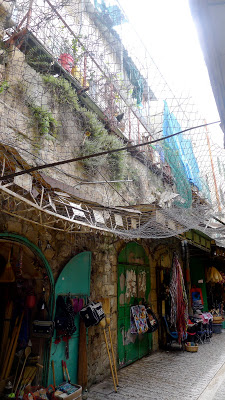
Entering the Palestinian house was eye-opening, though I am still not sure what I think about this type of tourism. There is something that seems inherently wrong with marveling at the squalid living conditions of others and turning their misery into a spectacle.
Though I have been to a number of third world countries, I have never traveled somewhere for the sake of seeing poverty and, walking through the streets of Hebron in the West Bank made me feel more aware than ever of my nationality, my skin color and the privileges that come along with them.
It is difficult for me to think of the conflict in an unbiased way after visiting Hebron. I understand that I only heard the Palestinian side of the story. I understand that the issue is more complex than what is visible on the surface. And I understand that there are injustices that lie on both sides of the battle. Still, it is difficult for me to fathom a justification for the extreme disparities in wealth, or the wall barring Palestinians from entering Israel, or the expansion of settlements in the heart of Palestinian cities.
Furthermore, I do not understand why the international community has been so passive about the issue and how the US justifies propelling such discrimination in the name of national interest.
I tried not to look at myself through the eyes of the locals, because I knew I would hate myself if I did.

